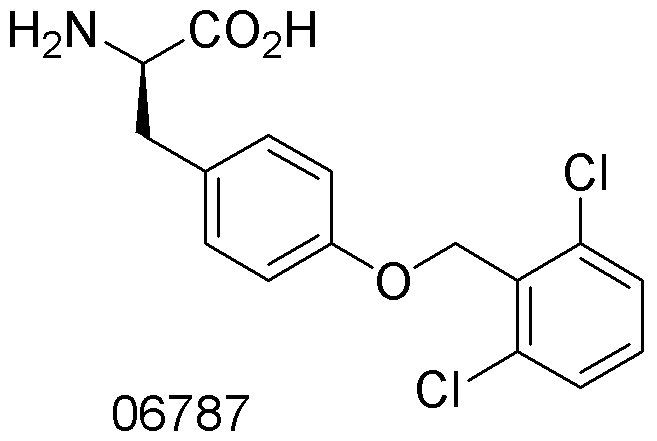O-2,6-Dichlorobenzyl-D-tyrosine is widely utilized in research focused on
- Pharmaceutical Development: This compound serves as a key intermediate in the synthesis of various pharmaceuticals, particularly those targeting neurological disorders, enhancing drug efficacy and specificity.
- Biochemical Research: It is used in studies investigating protein interactions and enzyme activities, providing insights into cellular mechanisms and potential therapeutic targets.
- Anticancer Research: The compound has shown promise in preclinical studies for its potential to inhibit tumor growth, making it a candidate for further exploration in cancer therapies.
- Neurotransmitter Studies: Researchers employ it to study the effects on neurotransmitter systems, contributing to the understanding of mood disorders and neurodegenerative diseases.
- Material Science: It is explored in the development of novel materials with specific chemical properties, benefiting industries focused on advanced coatings and polymers.
General Information
Properties
Safety and Regulations
Applications
O-2,6-Dichlorobenzyl-D-tyrosine is widely utilized in research focused on
- Pharmaceutical Development: This compound serves as a key intermediate in the synthesis of various pharmaceuticals, particularly those targeting neurological disorders, enhancing drug efficacy and specificity.
- Biochemical Research: It is used in studies investigating protein interactions and enzyme activities, providing insights into cellular mechanisms and potential therapeutic targets.
- Anticancer Research: The compound has shown promise in preclinical studies for its potential to inhibit tumor growth, making it a candidate for further exploration in cancer therapies.
- Neurotransmitter Studies: Researchers employ it to study the effects on neurotransmitter systems, contributing to the understanding of mood disorders and neurodegenerative diseases.
- Material Science: It is explored in the development of novel materials with specific chemical properties, benefiting industries focused on advanced coatings and polymers.
Documents
Safety Data Sheets (SDS)
The SDS provides comprehensive safety information on handling, storage, and disposal of the product.
Product Specification (PS)
The PS provides a comprehensive breakdown of the product’s properties, including chemical composition, physical state, purity, and storage requirements. It also details acceptable quality ranges and the product's intended applications.
Certificates of Analysis (COA)
Search for Certificates of Analysis (COA) by entering the products Lot Number. Lot and Batch Numbers can be found on a product’s label following the words ‘Lot’ or ‘Batch’.
Número de catálogo
Número de lote/lote
Certificates Of Origin (COO)
This COO confirms the country where the product was manufactured, and also details the materials and components used in it and whether it is derived from natural, synthetic, or other specific sources. This certificate may be required for customs, trade, and regulatory compliance.
Número de catálogo
Número de lote/lote
Safety Data Sheets (SDS)
The SDS provides comprehensive safety information on handling, storage, and disposal of the product.
DownloadProduct Specification (PS)
The PS provides a comprehensive breakdown of the product’s properties, including chemical composition, physical state, purity, and storage requirements. It also details acceptable quality ranges and the product's intended applications.
DownloadCertificates of Analysis (COA)
Search for Certificates of Analysis (COA) by entering the products Lot Number. Lot and Batch Numbers can be found on a product’s label following the words ‘Lot’ or ‘Batch’.
Número de catálogo
Número de lote/lote
Certificates Of Origin (COO)
This COO confirms the country where the product was manufactured, and also details the materials and components used in it and whether it is derived from natural, synthetic, or other specific sources. This certificate may be required for customs, trade, and regulatory compliance.


